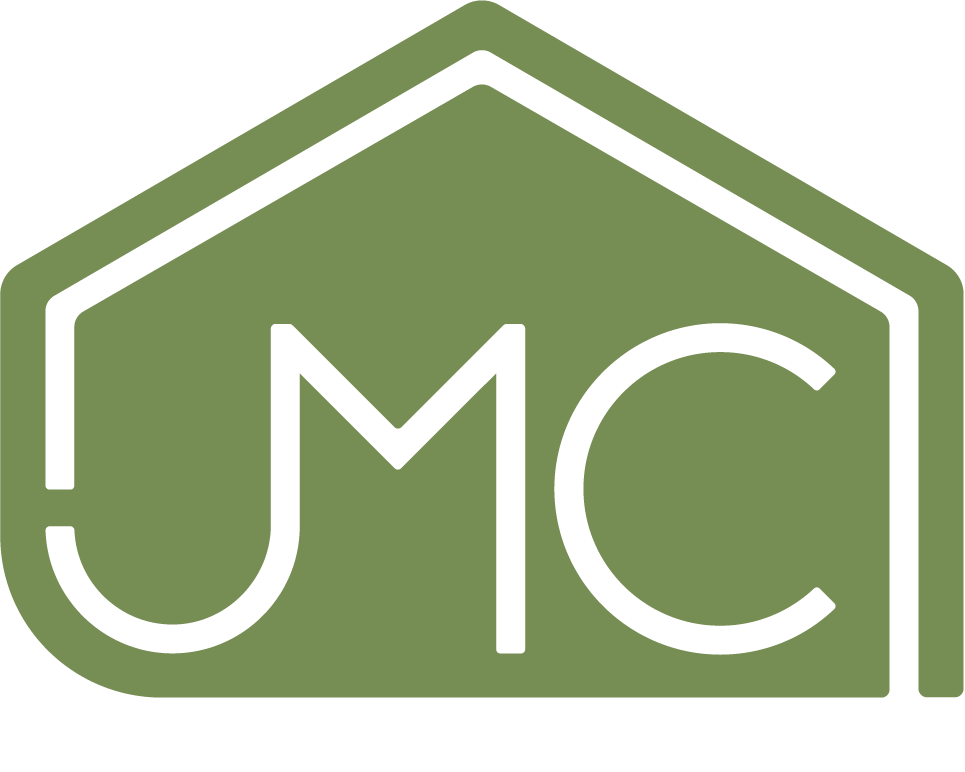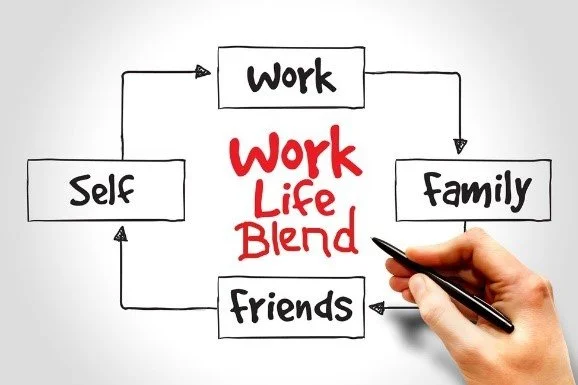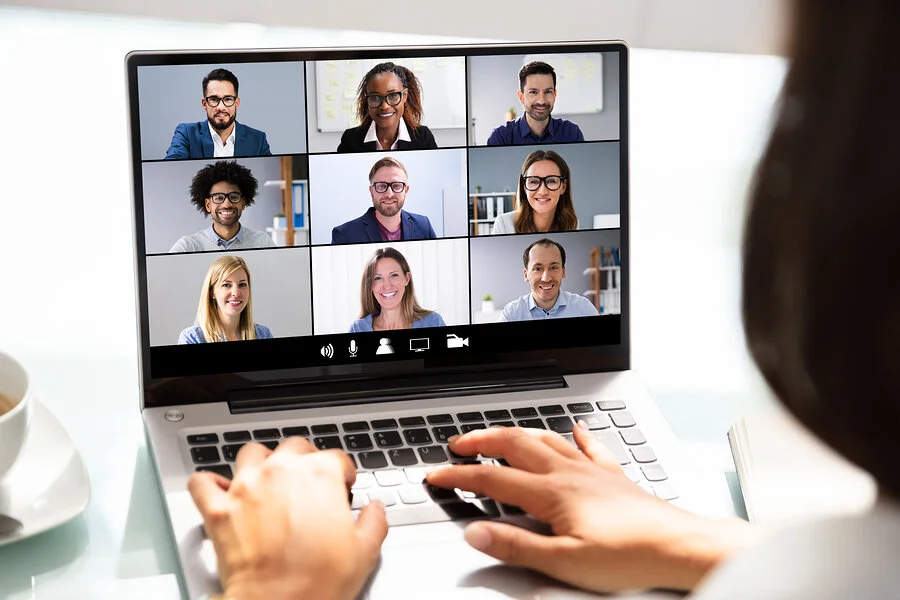Out with Work-Life Balance and In with Work-Life Blend
Covid-19 and remote work opened our eyes to many things, one of which is that emphasis should be on deliverables, productivity, and KPIs, rather than hours spent at work. If one can reach KPI’s and deliverables in 30 hours a week instead of 40, why punish the employee? Let the focus be on output not on hours spent at work. We live in a world where we are all connected via email, slack, social media and in multiple time zones. Let’s continue to work towards normalizing and freely sharing that personal commitments are just as important as the professional ones. If the employee can take a call or be working while their kids are in a sports class or if an employee is taking a call in the car, we should be accepting of the situation.
Evolving definition of Work Life Balance
Work-life balance was part of most workplace conversations pre-Covid. The concept assumed work and life as two separate entities and tried to give each equal proportions of attention. Covid came with remote working, and many organizations realized that work and life are integral. Work itself is a part of life, and their blending is unpreventable. It took a taste of remote working to realize that and usher in a new concept — work-life blending.
What Is Work-Life Blend? (NOT work life balance). Work-life blending helps employees become more flexible, productive, and mentally healthy. This new concept has moved from being two separate aspects of an employees life, to blending and integrating professional and personal lives in everyday life. Blending work and life can be waking up early to put in more hours so you can create more time for family functions, or relocating to a more serene neighborhood, so you work more productively.
Let's Blend More…
Both lives (professional and personal) shouldn’t compete or strike a perfect balance but should be flexible enough to accommodate the other. As the line between our personal and professional lives becomes more blurry, there are overlaps regarding our roles as colleagues, parents and friends,, there are zero struggles for work-life balance and no worries about high work time since work is integrated with social and personal lives. Work no longer denies you the life you want.
Each day spent meeting personal and professional goals increases the work-life blending appeal. We’ve discovered that we can live both lives comfortably while staying productive and physically and mentally healthy.
It is a Delicate Balance..
When you hear blend, don’t assume that you should work all the time and from everywhere or work while there's other things happening in your personal time. People do need predictable and specific marked time off. We do need boundaries so that we are not working 24/7 and creating burnout. A blend is being able to shut off when needed and still being able to meet your deliverables without being penalized.
Both Sides are Responsible…
Employees and Employers are both responsible for creating a blend. It is up to both parties to speak up, lean in, be open and communicate. Employers must be flexible and open to the idea that one doesn’t have to have one or the other and an employee doesn’t need to be tethered to a desk or specific office hours. Employees need to feel comfortable and willing to share what they need. The more transparent and honest each side is, the more productive everyone will be resulting in delivering the KPI’s that were set at the top of the year.
High Tech and Higher Maintenance: The Evolution of Maintenance
April 22, 2019, 1,418 days ago I published a blog called High Tech and Higher Touch: The Evolution of Leasing. Much as happened in the last 1,418 days. We have had the world shut down, human interaction has changed, expectations of consumer habits have evolved, but one thing has stayed the same: the need for exceptional customer experience.
April 22, 2019, 1,418 days ago I published a blog called High Tech and Higher Touch: The Evolution of Leasing. Much as happened in the last 1,418 days. We have had the world shut down, human interaction has changed, expectations of consumer habits have evolved, but one thing has stayed the same: the need for exceptional customer experience.
Our industry has made great strides around leasing centralization, where many have realized that technology like self guided tours was not created to replace human interaction, but the right technology must enhance the customer's experience.
In my previous blog, I mentioned from SatisFacts 2019 Online Renter Study, the perception of quality customer service is ranked #2 in importance regarding the leasing decision, which lets us know elimination of leasing jobs will not be a thing of the future. Self-guided tours allow us to better customize a prospects experience, ultimately complimenting the onsite team’s quality customer service. This has not changed in the last 5 years, customer service is still just as important.
Moving forward, the evolution of Maintenance; now that residents have had to deal with many changes over the last years, what is their expectation? We continue to hear about maintenance centralization; will that become equally as important as leasing in the next 5 years? The need for exceptional customer service still stands as important if not more important. With instant gratification, DIY and such flexible schedules where residents continue to balance all that is thrown their way, how can the onsite teams handle the expectations? Better yet, how can they handle the needs from residents with an astounding increase in open maintenance positions, current employees are looking for more work life balance and much more. Is “centralization maintenance” the answer? What does the term even mean?
When we think about “centralizing" anything, it doesn’t mean just removing current people from their positions, perhaps we can look at this opportunity to focus more on the quality of our current employees and invest in those and allow companies to help improve the customer experience through customer satisfaction. Currently in our industry we continue to see the average response time to a service request to be a standard 24/48 hour or even 72 hour time frame. Most residents' service requests are those easy ones to fix, garbage disposal, microwave filter, the switch in the electrical box or even a blind slat replacement. In order to increase or even maintain our residents expectations we must look to innovative solutions that will allow our residents to be heard as well as meet the residents preferences.
Understanding the residents' expectations around maintenance including DIY and instant gratification and putting together the struggle of so many open employee positions, innovative solutions like Happy Force leads to increased residents satisfaction, which ultimately leads to a lease renewal. What we can be confident in remembering; when a resident is deciding about renewing their lease, what impacts their decision? The #2 impact, "quality of maintenance service provided scored a 4.61 out of 5, on the SatisFacts Biennial Online Survey. This lets us know that just like leasing and the options to tour in person, virtual or self guided, there needs to be an option to be able to exceed residents expectations around maintenance service. DIY, Facetime service calls and optimizing current maintenance techs time on each service request must become part of the future in multifamily. According to a 2020 Survey from Kingsely, “The requirement for social distance, as well as continued focus on worker health and safety, will remain yet for some time. To help in communication and improving work, virtual technology should be a more widely used method of performing maintenance diagnostics and troubleshooting.”
When a resident reaches out for assistance within their home, we must look for opportunities to increase resident satisfaction, reduce the response time and be accepting of the new options such as video tutorial, FAQ guides, remote technicians and still the option for a tech to enter the home. It comes down to optimizing the team while giving the options the resident would like to have available at their fingertips.
My opinion 1,418 days ago still stands true, we must look at the traditional role of maintenance and view new solutions as an evolution not as an elimination to keep up with the changing preferences of renters.
How to Conquer Working From Home During COVID-19
COVID-19 has forced many renters out of the office and into a work-from-home situation and renters have had to adapt. What we’ve seen in every round of our COVID-19 National Renter Study, is an increase of renters working from home who have no idea when they will be allowed to return to work.
COVID-19 has forced many renters out of the office and into a work-from-home situation and renters have had to adapt. What we’ve seen in every round of our COVID-19 National Renter Study, is an increase of renters working from home who have no idea when they will be allowed to return to work. According to our overall study, only 38% are working from home however 86% don’t know when they will go back which leads to renters facing challenges working from home. The top 3 challenges renters are currently facing are a normal workday schedule, no dedicated space, and not used to working from home, none of which probably come as a surprise.
A normal workday looks so different since COVID-19. When it comes to facing the workday schedule while working from home, many distractions pop up. Focusing on keeping the same parameters as if you were still in the office is a huge help. Using Social Media to reach residents in helping them carve out a break for a few minutes will go along way. Posting reminders to stand up and stretch or take a walk around the community will lead residents to feel the workday schedule is as normal as possible. Even offering lunch to be delivered from a local restaurant to a resident’s home is a great gesture and allows residents to feel their workday is as normal as it was prior to COVID-19.
Although no dedicated space is most definitely a struggle for many renters creating a workspace in a small apartment is possible, it just requires a bit more creativity. The need for an effective home office is a trend that won’t go away anytime soon and we must help support or residents on this new way of working. Establish a specific work corner, a work chair, or desk. Residents should remember to keep the same dedicated space for work every day; switching locations daily can cause your brain to not be in work mode and really lead to distractions. Offering current residents to post their creative workspaces on a resident portal or on social media can help other residents who struggle with no dedicated space.
Renters are just not used to working from home. For years renters have not had to think about sharing their living space with their day job. There has always been a very well-defined line of when between work and home life, however now renters are struggling with separating work from enjoying the comfort of their home. Remind residents to put their work away at the end of the day by shutting down laptops and even turning phone notifications off can help create the same effect as “leaving the office”. Create social distanced community events that allow residents to leave their work at the end of the day and enjoy something outside of their apartment home.
-Featured on SatisFacts



